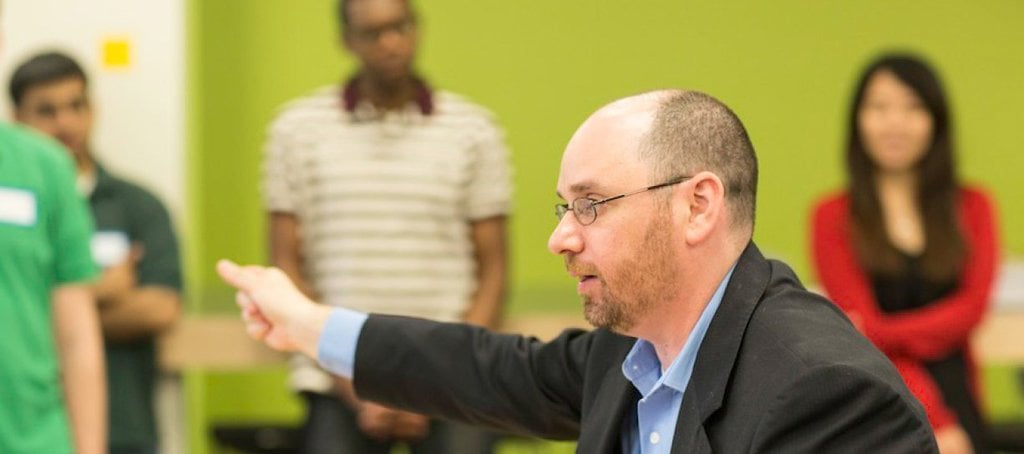Q&A with Russ Schoen
Northwestern University Kellogg School of Management students wanted their teams to work better together. FourSight expert Russ Schoen took on the challenge. We asked him to explain how he did it.
Do MBA students actually need training in teamwork?
Most first year MBA students work on project teams but don’t necessarily get deliberate training on how to be an effective team member. As a result, some teams work well together. Others don’t. Just like in organizations, MBA project teams can experience a lot of stress, dysfunction and conflict that can really get in the way of accomplishing goals and tasks.
How did you teach students to collaborate?
We used FourSight to give teams a common language for how to problem solve. It helps people be deliberate about clarifying, ideating, developing and implementing. Then it reveals their personal preferences for each of those steps, so folks get an understanding of why conflict may be occurring. Everyone naturally wants to operate in their own comfort zone—the part of the problem solving process where they have a high preference. But different team members have different preferences so without deliberate awareness of preferences, conflict can occur. FourSight becomes a sort of GPS for navigating the problem solving process. It helps the team see what they need to focus on, what the project needs, as opposed to a personal preferences.

Did students come to the training with their working teams?
They did. And I was surprised to find that some of the teams had no ideators at all. When we debriefed the Foursight Profile, many teams realized that they had been leading with their main preferences: to clarify and implement. They would clarify, have one idea and implement it. They were were bypassing ideation, the part of the process that is their lowest preference. As a result, they often were implementing less than optimal solutions.
What happens when a team has a low preference for ideation?
Without awareness, a group with a low preference for ideating will often go with the first idea that is just “good enough” and they may not explore an array of options that offer better opportunities and more intriguing possibilities. They are implementing sort of “meh” ideas, not great ones.
Can you really train people to get better ideas?
Yes. FourSight measures preference not ability. Everyone has the ability to do all parts of the process. Research over the past 50 years shows that you can train people to use deliberate thinking tools to boost performance. It is not about natural creative talent. I use FourSight for team effectiveness because the assessment not only gives people personal insight, but the model gives them a common language for collaboration, regardless of their preferences. They discover there are specific ideation tools they can use to help them ideate. There are tools for clarifying, developing and implementing as well. We teach them to use creative thinking tools so regardless of team preferences they have the tools to take on each stage of the problem-solving process.
How did they like the workshop?
They want us to do this workshop for other students, because FourSight gave them a practical way to engage in team issues.They could begin to self diagnose, to figure out why things were happening. They could see what was helping them perform and what was getting in the way. The language, the process and the tools gave them a way to manage going forward. It helped them turn the team dynamic from an obstacle to an opportunity.
Russ Schoen is FourSight’s Chief Collaboration Officer and an adjunct professor at the International Center for Studies in Creativity.





